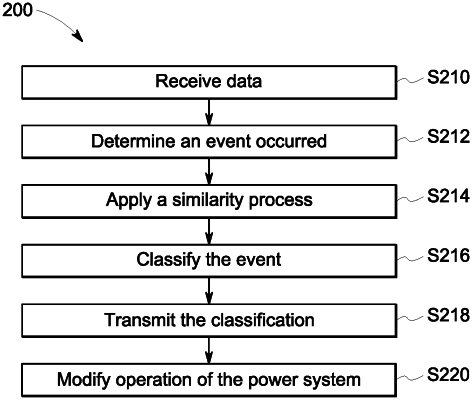| CPC G06F 21/554 (2013.01) [G01D 3/032 (2013.01); G05B 23/0275 (2013.01); H02J 2203/20 (2020.01)] | 15 Claims |

|
1. A method comprising:
receiving, via a communication interface of an event detection and classification module comprising a processor, data from one or more sensors in a system, wherein:
the event detection and classification module includes a detection module and a classification module, and
the system is a power network and the one or more sensors are associated with a plurality of nodes in the power network;
determining an event occurred based on the received data;
applying a coherency similarity process to the received data via the classification module, wherein the coherency similarity process determines whether the received data is similar, within one of a threshold value and a range of values, to expected data for the event;
determining whether the event is an actual event or a mal-doer event based on an output of the classification module, further comprising
calculating an event singular value decomposition for the received data based on the application of the coherency process;
identifying a post-event right singular value based on the calculated post-event singular value decomposition;
comparing the post-event right singular value to a reference value for the same at least one pair of nodes to output a classification threshold value; and
determining whether the classification threshold value is one of inside or outside a predetermined value or range of values;
transmitting the determination of the event as the actual or the mal-doer event; and
modifying operation of the system based on the transmitted output.
|